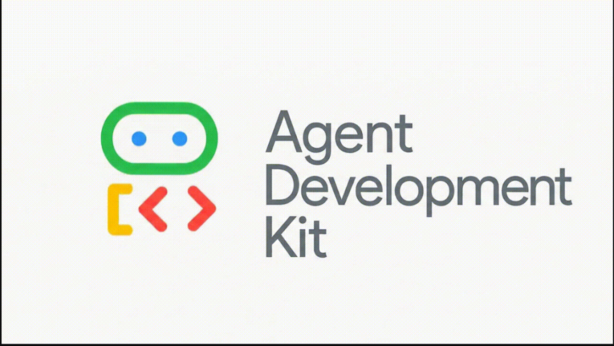Upgrade & Secure Your Future with DevOps, SRE, DevSecOps, MLOps!
We spend hours on Instagram and YouTube and waste money on coffee and fast food, but won’t spend 30 minutes a day learning skills to boost our careers.
Master in DevOps, SRE, DevSecOps & MLOps!
Learn from Guru Rajesh Kumar and double your salary in just one year.

📌 What is Google Agent Development Kit?
The Google Agent Development Kit (ADK) is a developer toolkit designed to help build intelligent software agents powered by Google’s large language models (LLMs), like Gemini. Unlike traditional chatbots, these agents are designed to reason, plan, use tools (APIs, plugins), maintain memory, and perform complex actions autonomously.
Think of ADK as Google’s response to tools like LangChain or Microsoft’s AutoGen, but with deeper integration into Google’s AI ecosystem, including:
- Gemini models
- Google Cloud APIs
- Google Workspace
- Tools and function-calling systems
The goal is to help developers create AI agents that go beyond conversation, performing tasks in apps, automating workflows, and interacting with tools and APIs—just like a human assistant would.
💼 Major Use Cases of Google Agent Development Kit
- 🧠 AI Assistants (Enterprise, Productivity, Healthcare, Legal)
- Custom assistants for internal documents, meeting summaries, legal briefings, or health assessments.
- Example: A legal research agent that parses laws and case histories.
- 🎧 Voice and Chat Interfaces
- Voice-enabled AI bots for smart homes, vehicles, or accessibility applications.
- Example: Smart agents for IoT-based home control.
- 🏢 Workflow Automation
- Agents that file Jira tickets, generate daily reports, read emails, and take actions.
- Example: An HR agent that helps onboard new employees automatically.
- 📞 Customer Support Agents
- Multilingual support agents that can pull CRM data, update orders, and escalate issues.
- Example: An airline support agent that can change bookings via API.
- 🧪 Research and Data Analysis
- Agents that fetch, analyze, summarize, and visualize data from APIs or internal systems.
- Example: A market insights agent for a marketing team.
- 📲 Productivity Bots for Developers
- Debugging assistants, documentation navigators, or auto-testing bots.
- Example: An agent that fetches relevant code snippets from your company’s codebase.

⚙️ How Google Agent Development Kit Works: Architecture Overview
ADK agents rely on language model reasoning, external tool use, and multi-step task execution. Here’s a breakdown of the architecture:
🧩 Architecture Layers
| Layer | Function |
|---|---|
| Prompt Layer | Processes user queries using Gemini for reasoning and task understanding. |
| Planner Layer | Breaks tasks into steps, calls tools, and sequences execution. |
| Tool Handler Layer | Interfaces with plugins, APIs, databases, or web tools. |
| Memory Layer | Stores session context, user preferences, or historical actions. |
| Execution Layer | Carries out tasks like API calls or actions in connected services. |
| Response Layer | Formats and returns final output to the user. |
These components are orchestrated by an agent core that dynamically interprets user input, selects tools, remembers past tasks, and returns actionable results.
🔁 Basic Workflow of Google Agent Development Kit
Here’s a simplified lifecycle of how an agent works from input to output:
🧭 Step-by-Step Flow:
- User Input
User provides a command or question via chat, voice, or API call. - Intent Parsing & Planning
The Gemini model processes the input, identifies the intent, and plans the sequence of tool use/actions required. - Tool Selection
Based on intent, the agent chooses a relevant tool (API function, search module, database query, etc.). - Execution
The agent invokes the tool with context-aware inputs, possibly chaining multiple tool outputs. - Memory Storage (Optional)
Agent can store the user’s preferences, task status, or feedback for future use. - Response Generation
The agent formats the output and sends it to the user (via chat, web response, CLI, etc.). - Looping or Follow-up
If needed, the agent may prompt the user for clarification or take the next step automatically.
🚀 Step-by-Step Guide to Getting Started
📦 Step 1: Environment Setup
- Language: Python recommended
- Install SDK (hypothetical or early access)
pip install google-agent-sdk
- Enable APIs: Google Cloud APIs if you’re accessing services like Calendar, Gmail, etc.
🧠 Step 2: Define a Basic Agent
from google_agent_sdk import Agent, Tool
@Tool(name="hello_tool")
def say_hello(name: str) -> str:
return f"Hi {name}, I’m your smart assistant!"
agent = Agent(name="GreeterAgent")
agent.register_tool(say_hello)
response = agent.run("Say hello to Ravi")
print(response)
🔧 Step 3: Add Real Tools
You can register tools that connect to:
- REST APIs
- Google Sheets
- Cloud Functions
- SQL/NoSQL databases
- External SDKs
@Tool(name="get_weather")
def fetch_weather(city: str) -> str:
# connect to real weather API
return f"Current weather in {city} is 28°C."
🧠 Step 4: Use Planning & Memory
agent.use_memory = True
agent.run("Remember I like pizza")
agent.run("What do I like?")
You can also implement task planners:
@Tool(name="trip_planner")
def plan_trip(destination: str, duration: int):
return f"Planning a {duration}-day trip to {destination}."
🌍 Step 5: Deploy
You can deploy your agent as:
- ✅ CLI tool
- ✅ REST API with FastAPI/Flask
- ✅ Web interface with React
- ✅ Google Chat Bot
- ✅ Slack App or WhatsApp Bot
🔐 Step 6: Secure and Extend
- Use OAuth2 or API keys for secure external API access.
- Enable role-based access for agents that handle sensitive data.